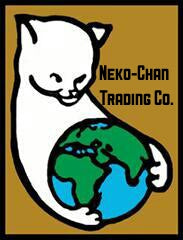
Frankincense, 20 Sticks
Frankincense has been traded on the Arabian Peninsula and in North Africa for more than 5000 years. A mural depicting sacks of frankincense traded from the Land of Punt adorns the walls of the temple of ancient Egyptian Queen Hatshepsut, who died in circa 1458 BCE.
Frankincense was a part of the Ketoret which is used when referring to the consecrated incense described in the Hebrew Bible and Talmud. It is also referred to as the HaKetoret (the incense). The frankincense of the Jews, as well as of the Greeks and Romans, was a substance now called Olibanum (from the Arabic al-lubban), a product of certain trees of the genus Boswellia (Natural Order, Amyridaceae), growing on the limestone rocks of south Arabia.
"While burning incense was accepted as a practice in the later Roman Catholic church, the early church during Roman times forbade the use of incense in services resulting in a rapid decline in the incense trade."[11] Frankincense was reintroduced to Europe by Frankish Crusaders (Frank-incense).
Some historians have also postulated that the name comes from the Arabic term for "Oil of Lebanon" since Lebanon was the place where the resin was sold and traded with Europeans. The lost city of Ubar, sometimes identified with Irem in what is now the town of Shisr in Oman, is believed to have been a center of the frankincense trade along the recently rediscovered "Incense Road". Ubar was rediscovered in the early 1990s and is now under archaeological excavation. The Greek historian Herodotus was familiar with Frankincense and knew it was harvested from trees in southern Arabia. He reports, however, that the gum was dangerous to harvest because of venomous snakes that lived in the trees. He goes on to describe the method used by the Arabians to get around this problem, that being the burning of the gum of the styrax tree whose smoke would drive the snakes away.
Frankincense is also mentioned by Theophrastus and by Pliny the Elder in his Naturalis Historia. Southern Arabia was a major exporter of frankincense in ancient times, with some of it being traded as far as China. The Chinese writer and customs inspector Zhao Rugua wrote on the origin of Frankincense being traded to China: "Ruxiang or xunluxiang comes from the three Dashi countries of Murbat (Maloba), Shihr (Shihe), and Dhofar (Nufa), from the depths of the remotest mountains.
The tree which yields this drug may generally be compared to the pine tree. Its trunk is notched with a hatchet, upon which the resin flows out, and, when hardened, turns into incense, which is gathered and made into lumps. It is transported on elephants to the Dashi (on the coast), who then load it upon their ships to exchange it for other commodities in Sanfoqi. This is the reason why it is commonly collected at and known as a product of Sanfoqi." Ruxiang was the Chinese name for frankincense, and Dashi the Chinese name for Arabia.
